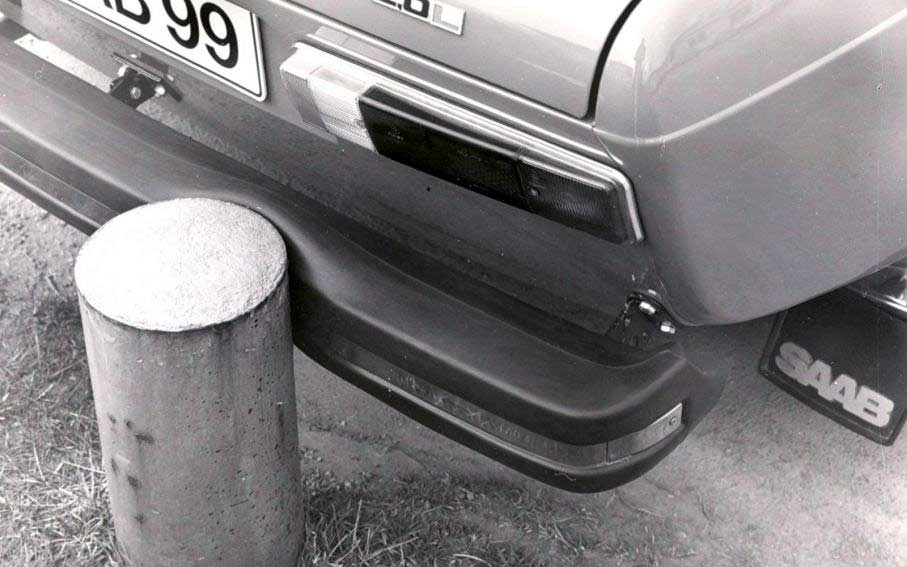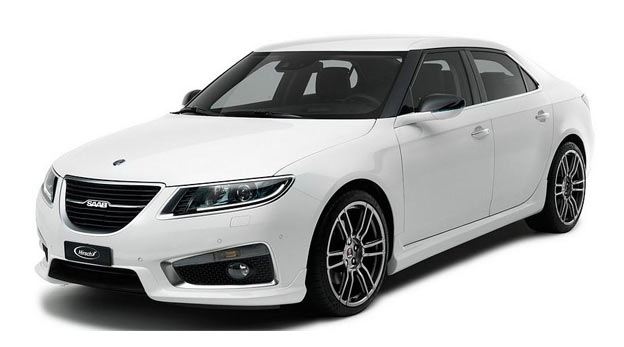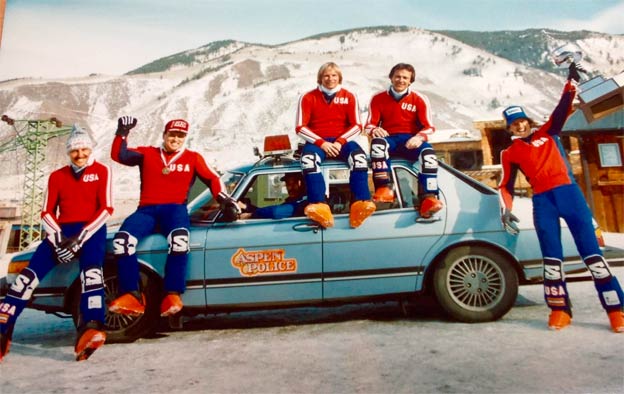In the beginning, it fell off and served no purpose at all, but soon enough, the bumper had to live up to its name. We will tell the story of one of the most overlooked details in the automotive world.
American TV viewers covered their ears as they watched a commercial featuring Pontiac’s CEO, John Z. Delorean (yes, that Delorean!), wielding a sledgehammer. He approached a car and said, “This is the new 1968 Pontiac GTO. It’s been restyled from bumper to bumper.”
Then he struck the car’s front three times with the sledgehammer. Bang, bang, bang! Delorean continued, “This is the new 1968 Pontiac GTO. It’s been redesigned from bumper to bumper. It’s the biggest news since, well, bumpers.”
Did the car get destroyed? Shattered glass and bent metal? Not at all. Miraculously, the Pontiac’s nose regained its shape over and over again. Not a scratch. Endura had been introduced, the new impact-absorbing material that would put an end to the trouble caused by minor collisions for American drivers, at least for Pontiac owners. Endura was not only durable, but it could also be molded into any desired shape, much to the delight of designers.
Saabs stötfångande stötfångare
Swedish TV viewers had a similar experience in the summer of 1971 when Saab introduced the bumper on the ’72 models during prime time on state television. A Saab 99 repeatedly slammed into a pole. The black bumpers with chrome strips and the decal text “Saabs stötfångande stötfångare” (do you remember it?) compressed upon impact and bounced back. It was a big deal in every Swedish household!
If the dent became too deep, individual components behind the rubber could be replaced, and a new chrome strip cost 16 kronor and 50 öre. In a commercial, Saab, Volvo, and Opel were driven in slow motion into a pole, followed by price tags showing the cost of repairs. Zero kronor for the Saab 99, several hundred for the others. Saab had acquired a crest and teased its competitors.
The bumper was originally called “kofångare” in the early days of motoring. It is said to have made its debut in 1897 on a creation called the Nesseldorfer Wagenbau Präsident 1897. Unfortunately, it had the tendency to fall off frequently before it could serve any purpose.
For a long time, the bumper was simply a sheet or steel beam without any particular design or proven functionality, but as car styling became more important, it began to change.
On cars like the American Graham or Duesenberg, the shape of the bumper became a signature feature for the brand on numerous models. The former had a lightweight V-shaped chrome structure in a single plane, while the latter had a double construction with a mustache-like upper part and a distinct central marking.
Countless variations have been designed since then, some without the slightest attention from history, while others became famous. Erwin Baker, better known as Cannonball Baker, was an admired American adventurer and the one who was posthumously honored with the “Cannonball Run,” a cross-country car race across the United States. In the 1920s, Baker was hired by the company “Balloon Bumpers” and advertised their inflatable rubber bumpers. It sounded great, but the number of units sold was reportedly minuscule, and their actual function was highly unclear.
In the 1940s, chrome began to dominate, especially on American cars. The 1946 Lincoln had a front end design whose metal could have been used to construct an entire European car. During the early years of the 1950s, the bumper horns also grew to aggressive dimensions, particularly on Cadillac. The inspiration was claimed to be the bombshells on fighter planes, but when Virginia Ruth Egnor, with her ample bosom, became known overnight as “the dumb blonde Dagmar” in a TV series from 1950 to 1951, Cadillac’s prominent bumper horns acquired the same name, especially on the 1955 models: Dagmars. Talk about bombshells.

Saab’s Impactful Innovations in the Bumper Domain
Saab, the renowned Swedish automaker, made significant contributions to the evolution of bumpers. The company’s dedication to safety and innovation led to the development of groundbreaking features that revolutionized the automotive industry.
One of Saab’s notable achievements was the introduction of the energy-absorbing bumper system. In the early 1970s, Saab engineers recognized the importance of minimizing the impact forces during a collision. They devised a design that incorporated a combination of hydraulic shock absorbers and elastic elements within the bumpers. This system allowed the bumper to compress upon impact, dissipating the energy and reducing the risk of severe damage to the vehicle and its occupants.
Saab’s energy-absorbing bumpers not only provided enhanced safety but also proved to be cost-effective. By absorbing and distributing the impact forces, these bumpers reduced the need for extensive repairs or replacements after minor collisions. Saab’s commercials showcasing the durability and resilience of their bumpers created a stir among car buyers, highlighting the company’s commitment to safety and practicality.
Furthermore, Saab introduced innovative materials in their bumper designs. They utilized high-strength steel and reinforced plastics to create lightweight yet robust bumpers. This approach helped in achieving optimal balance between impact resistance and vehicle weight, leading to improved fuel efficiency and handling.
Saab’s dedication to research and development also resulted in the integration of advanced technologies into their bumper systems. They incorporated sensors and crash detection systems, enabling the bumpers to respond intelligently to collisions. These sensors would analyze the impact forces and activate appropriate safety measures, such as deploying airbags or activating seatbelt pre-tensioners, to further protect the vehicle occupants.
Another notable innovation by Saab was the introduction of active bumper systems. These bumpers employed advanced actuators and sensors to detect potential collisions and adjust their position and stiffness accordingly. By adapting to the surrounding environment in real-time, these active bumpers provided an additional layer of protection by minimizing the severity of impacts.
Saab’s commitment to safety and continuous improvement influenced the automotive industry as a whole. Their innovative bumper designs and safety features set new benchmarks and prompted other manufacturers to prioritize safety in their vehicles.
In conclusion, the history of the bumper is a testament to the evolution of automotive design and safety. From its early days as a simple metal beam to the introduction of impact-absorbing materials and advanced technologies, the bumper has become an indispensable component in modern vehicles. Saab’s pioneering efforts and innovative solutions in the bumper domain have played a crucial role in enhancing vehicle safety and reshaping the automotive landscape. The legacy of Saab’s contributions continues to inspire manufacturers worldwide to prioritize safety and develop innovative solutions for the benefit of drivers and passengers alike.












Proper bumpers, as opposed to todays’ plastic covers!
My SAAB 99 had a very good bumper. It protected my car and me very well in a very bad accident I was in. The only damage to my car was a dented hood (bonnet). The bumper absorbed an impact that completely destroyed the other car and sent the driver to the emergency room 😢. I fell asleep and rear ended a slower moving car and the back of that car (Ford Escort) was crushed all the way up to the back seat. I was able to drive away with a tiny dent. My 2005 9-3 would certainly not fare so well.
I remember back in the day , somebody bumped into the back of my dad’s Saab at traffic lights , because it was a ‘kiss’ my father knew there would be no damage and didn’t worry , traffic lights went to green and he drove off , unfortunately for the offending car ( a brand new montego) his bumper had hooked over the towbar and my dad managed to rip his bumper right off 🤣😂 the guy was so pissed off
I just to drive Saab, and even the complete headlight unit was fastened on springs.
One night I unfortunately hit a deer crossing the road. The deer died, but there wasn’t any damage to the car, whatsoever.
My Saab 900 had ish bumpers. I hit a car up the rear and wrote the car off. My Saab had a few scratches that I polished out. I was only doing ish to 30mph the car in front just stopped without reason so it got the full impact oooops
To Steve Sewal> In my ’84 900i I hit a deer at 50mph, didn’t even have time to touch the brake as it jumped over a high hedge and landed right in front of me. The damage to my SAAB was a half inch crack in the front number plate by the mounting screw. The deer didn’t fare so well, neither did the Peugeot 106 that caught it on the rebound coming the other way, it was totalled.